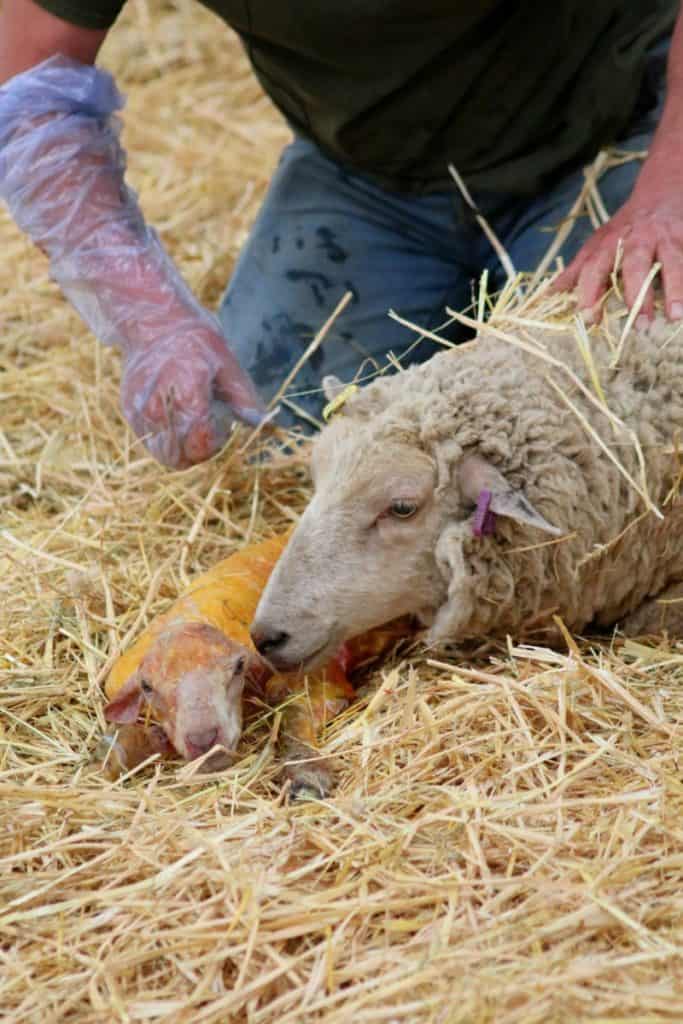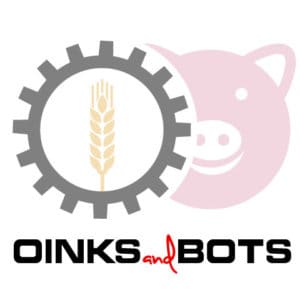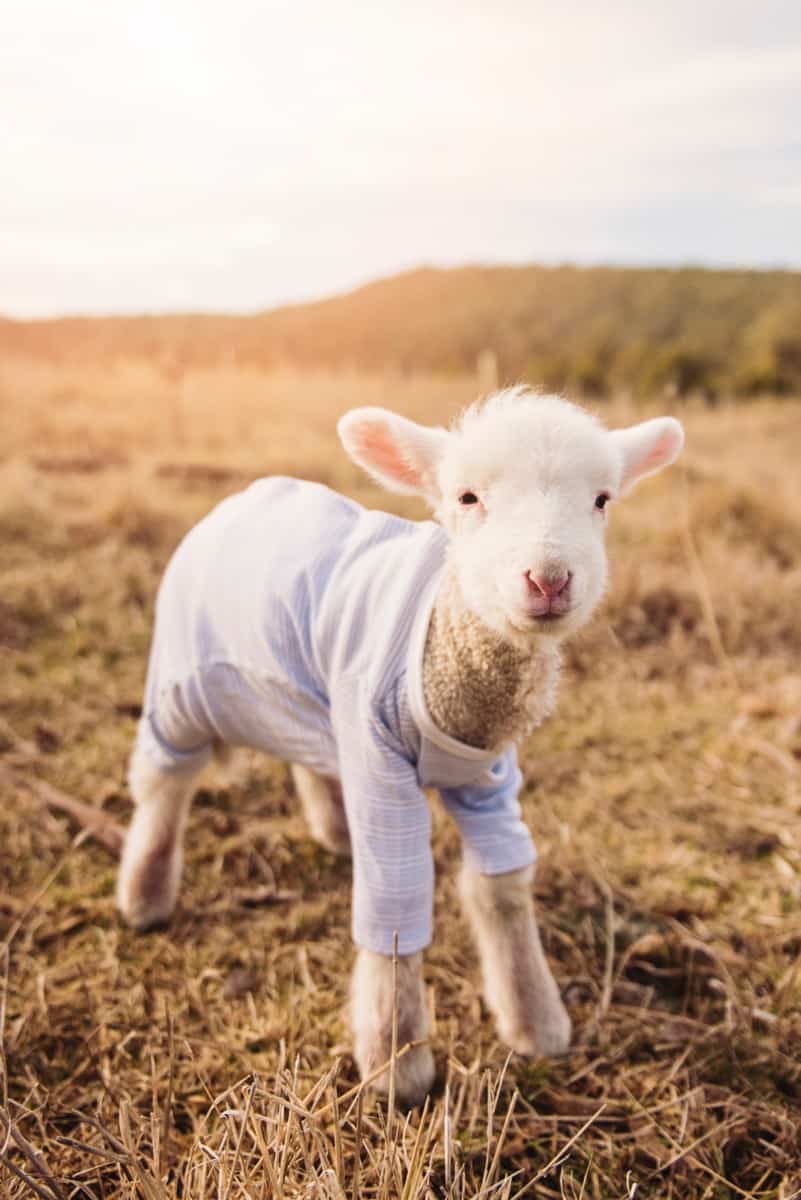We have already discussed in our article on how to deliver lambs that there can be complications in delivering lambs. This article will explore common difficulties during the lambing process and how best to approach them. Obviously if you are ever unsure, it is best to use veterinary assistance. This blog is not to be used in place of an animal expert.
Normal birth positions
There are two positions that are considered to be normal birth positions. You have what is called the forward-facing normal position. We explored in detail in our article on how to deliver lambs in this position previously. This position is where the forelimbs are extended forward, and the head of the lamb is resting in between them.
The second is where you have the backward-facing position. This is where the hind-limbs are facing out of the vulva and the head is at the other end between its feet. While this is considered a normal birthing position, for some breeds with shorter rib-cages, this can be dangerous as the pressure can crack the ribs or rupture organs.
Causes of lambing difficulty
Size
We have discussed in both on our article on how to deliver lambs and sheep nutrition how having large lambs can cause lambing problems. This can also happen if when you are breeding your sheep and you place a large ram with a small ewe, you run the risk of having the lamb be too big.
You also run the risk of having your lambs be too big if you overfeed the ewes. Other times your ewe is simply too fat to lamb effectively and needs intervention, despite the lamb being in the correct position and everything else.
Malpresentations
This will account for the vast majority of your dystocia (difficult birth) in your flock. There can be a few different positions that can vary in difficulty in assisting. We will now look at some of the more common ones. However, let’s look at sanitary precautions first. If you need to assist with birth, this is of utmost importance for both the health of your ewe and lamb.
Sanitary Precautions
You need to make sure that your hands have been washed with warm soapy water. Next you will need to get disposable plastic sterile gloves. These precautions are necessary for all assisted births. If your ewe gets an infection in her womb, it can lead to poor milk production or even death.
Common Malpresentations
Elbow lock
This is a “normal” position only that your lamb’s elbows are locked in the birth canal. To treat this, you will need to push the head a little into the vulva so that you can pull the legs out a little more. You can treat this the same as you would a normal birth after that.
Legs Back
If one or both forelimbs are tucked in under the lamb’s chest, you will need to correct this before you can continue. If there is one leg out, you will need to push the head back into the pelvis. You will need to cup the hoof that is back as it can be easy to tear the womb lining with the hoof if you are not careful. You will then need to carefully pull it forward so that both feet are facing forward with the head resting in between. By following standard birthing procedures, your lamb should be expelled within the next 30-60 seconds.
Head Back
Lambs in this position are often already dead however it is still possible to deliver a lamb if it is still alive. First you will need to use lambing ropes to keep the legs in position. You will then need to cup the muzzle of the lamb with your palm. Being gentle (the jaw of the lamb is delicate and breaking it will likely lead to starvation) you will reposition the head into the regular position. By using the palm of you hand to cover the muzzle, you are also protecting the womb from the lamb’s teeth.
You can then approach this in one of two ways. You can look at easing the head forward by pulling the eye socket, but this can be traumatic for your lamb. The other option is to use a running noose. You can flick it over both ears of the lamb so that it is resting against the back of the skull. You will then want to put it through the lamb’s open mouth and ever so gently ease it into the standard position.
One front leg back
Sometimes one of the forelegs is tucked in beneath the lamb. Though it is desirable for both of the forelimbs of the lamb to be facing forward, this is not always necessary. If the pelvic area is large enough or if the lamb is small enough, it is possible to deliver the lamb this way.
If the lamb is too large or the pelvis is too small for this, gently ease the lamb back into the uterus and being the backwards forelimb forward to the normal position. Remember that the hoofs can damage the uterus or vagina so extra care is needed to ensure that this does not happen. Usually cupping your hands around the hoof can work (gloved). Once both forelimbs are forward, bring the lamb forward with gentle traction.
Breech Position
A true breech position is where your lamb is backwards completely with both of its legs tucked beneath it. In many cases you will see the tail poking out of the birth canal, what you will need to do is push it back in gently, you are looking to ease both of the lamb’s hind legs into the birth canal. Again, you need to be mindful of its hoofs and to cup them in your hands as you manoeuvre each hind leg separately into the birth canal. You will then be able to gently ease it out backwards.
You should never attempt to turn the lamb around in the uterus, you will likely kill the lamb making it drown and very likely will damage or outright kill your ewe too.
Multiple Births
All of the above can apply to multiple births too. However, you will need to ascertain exactly which limb belongs to who. And if you have one lamb facing backwards and another facing forward, it is always advisable to deliver that one first. You will only have to worry about two limbs, rather than two limbs and a head. Often, by delivering one lamb, it can make it easier to birth the others.

Aftercare
After delivering your lamb, check the uterus to make sure that there are no other lambs in there. It can be devastating to know that a few days later you missed one and you have to deliver a dead lamb to save your ewe. So preforming this basic check can save you a lot of headaches later.
Check to make sure that your lamb can breathe as soon as possible, clear the airways of mucus and other fluids. Sometimes we swing the lambs by the back of the legs to clear out the airways, but make sure to be gentle!
We often take the lambs inside if they need to warm up if they are born on a cold night. But before we do that, we make sure that they are healthy otherwise. Able to bleat and have suckled a little from their mother. We want to make sure that there is a bond there. If it is warm enough, we leave the lambs in with their mothers in a small pen to make sure that they bond, and the following day we release them to the greater herd.
Like everything I have on this blog, make sure to get advice from your local vet if you have any questions.

